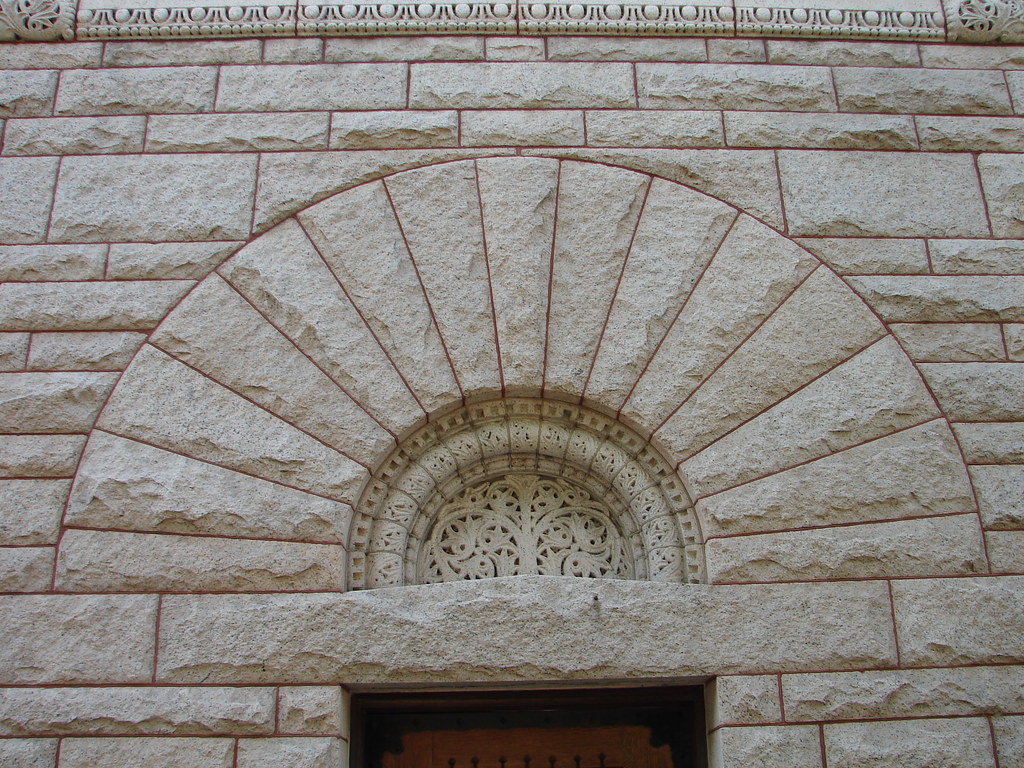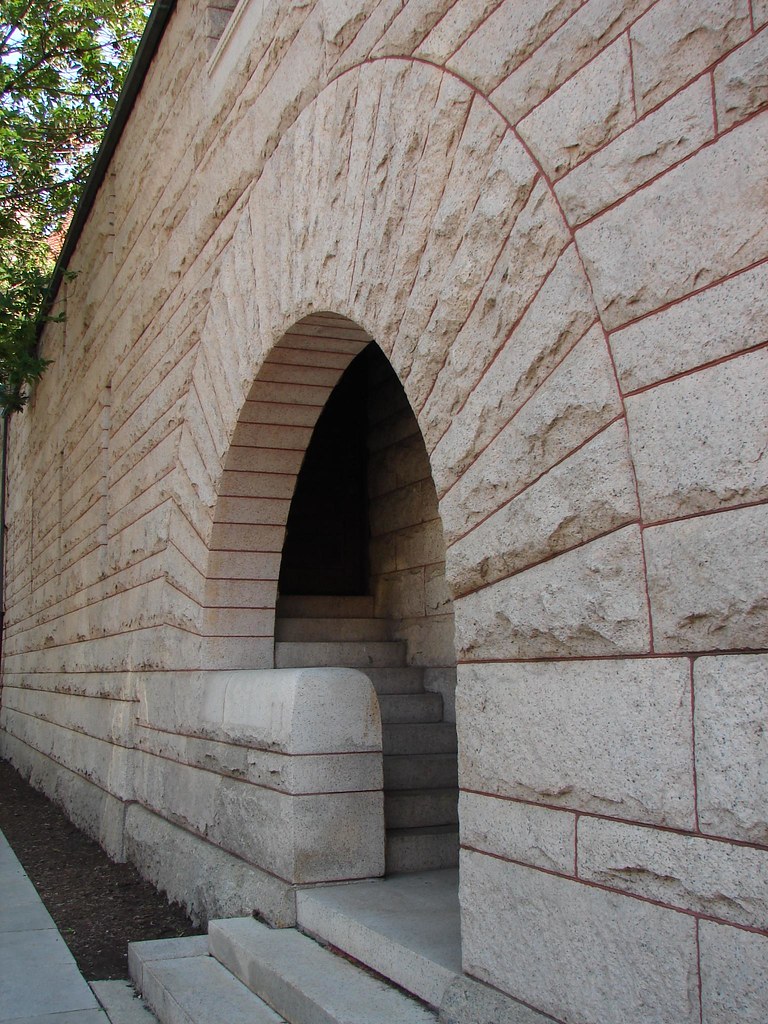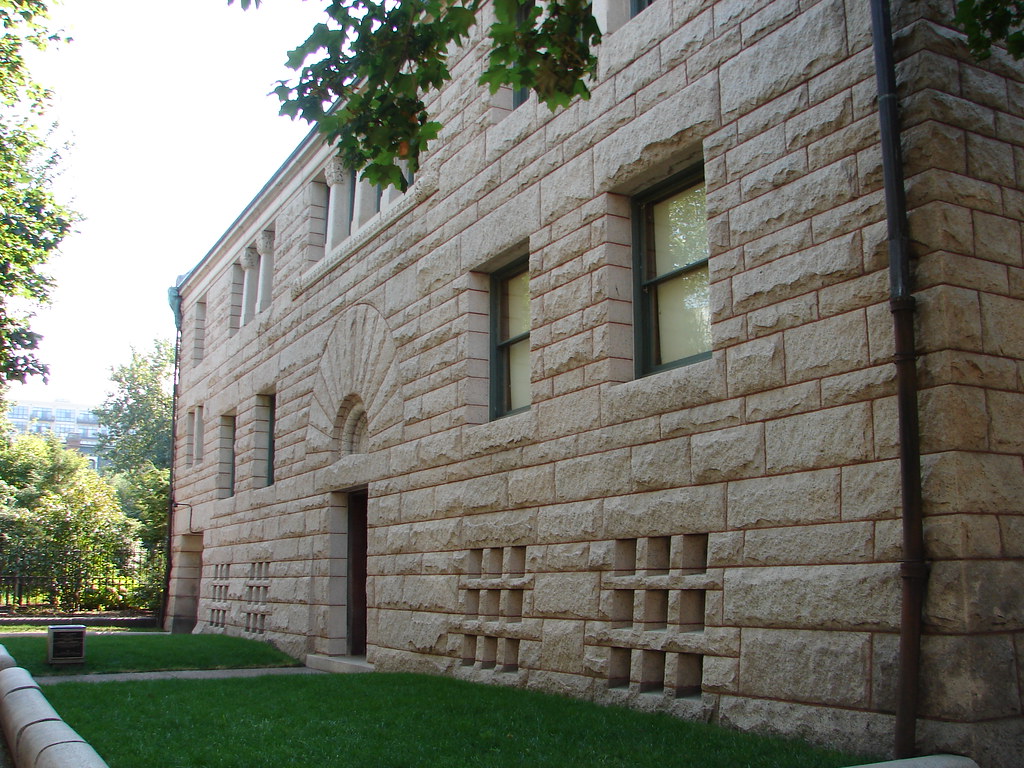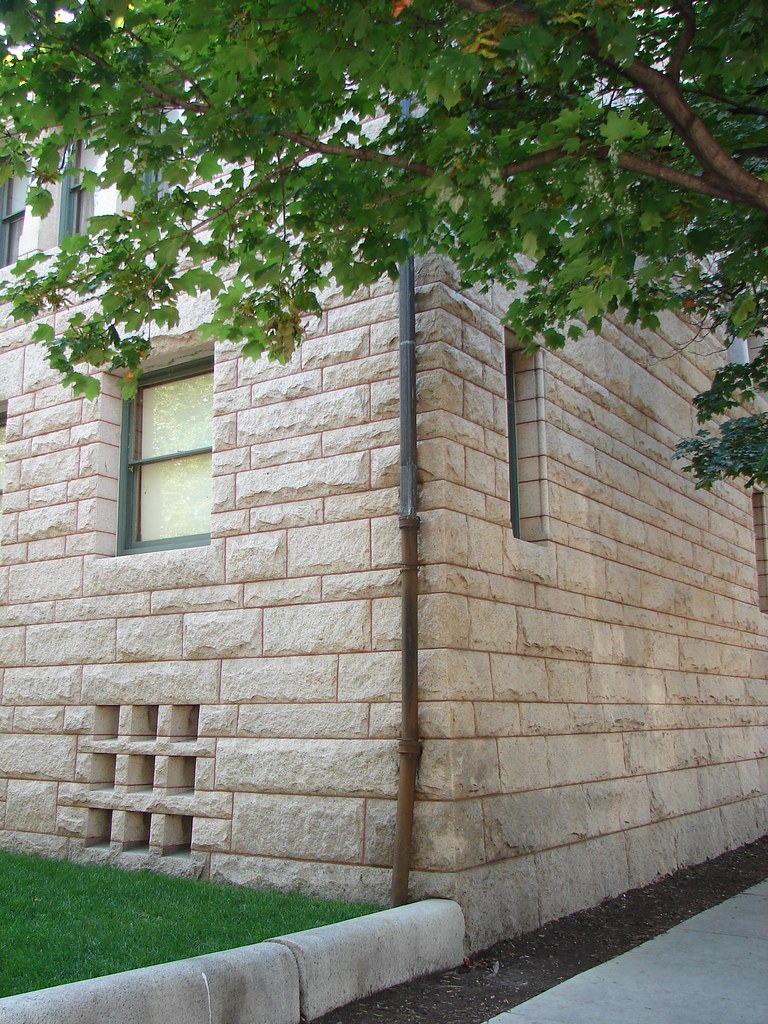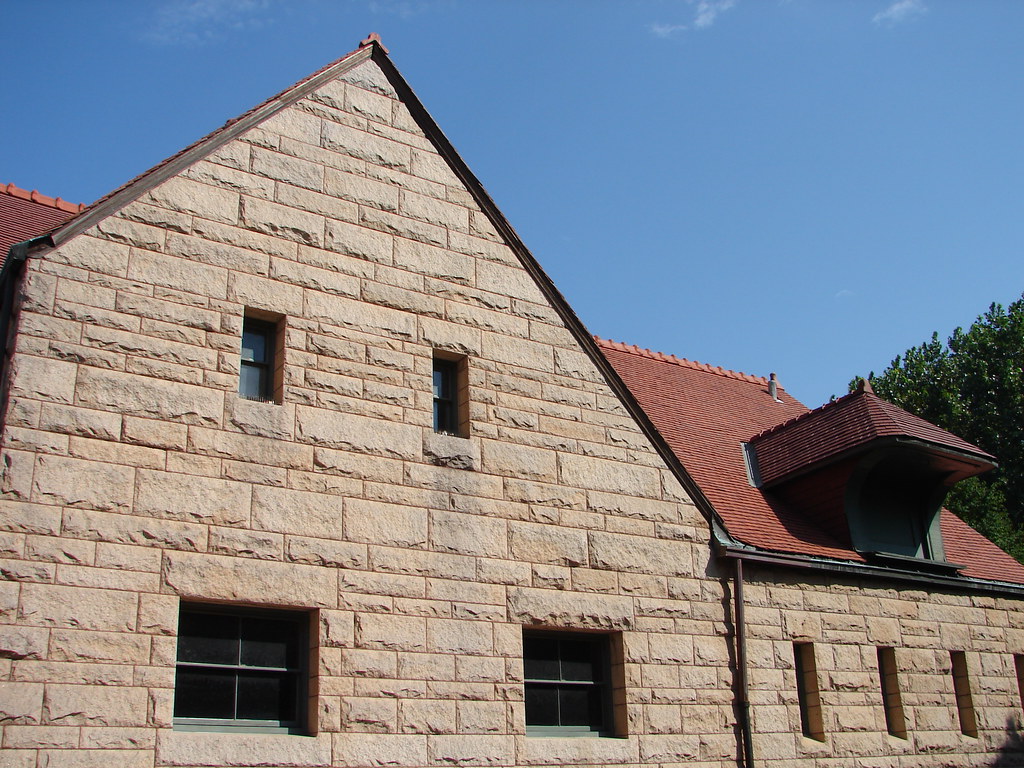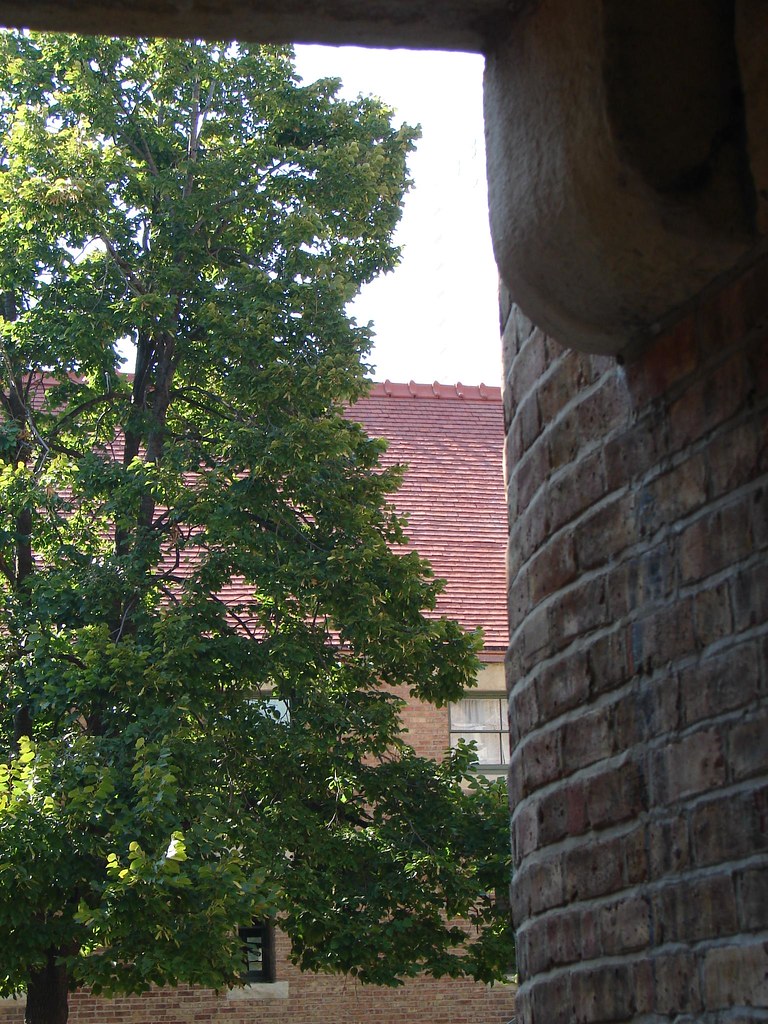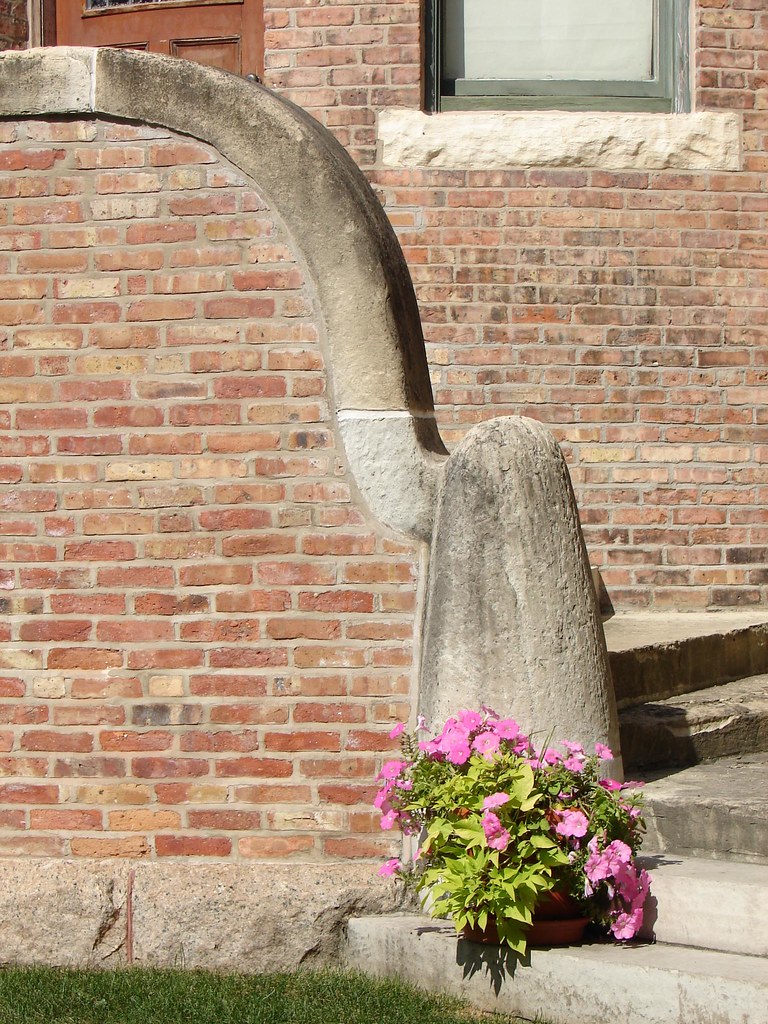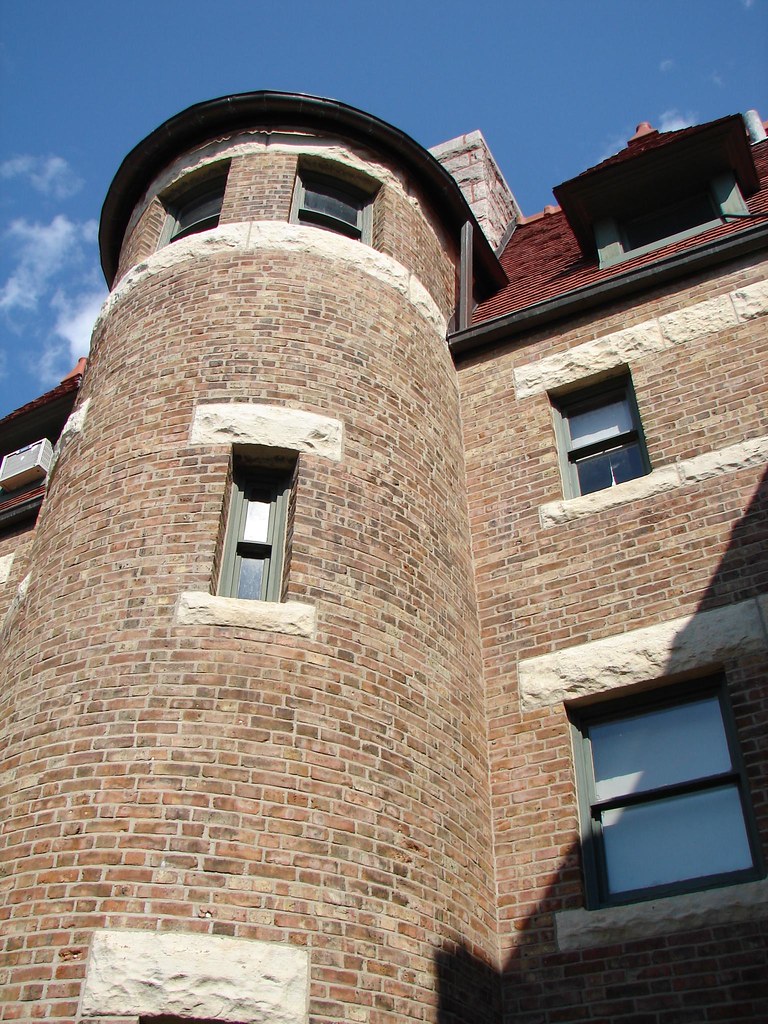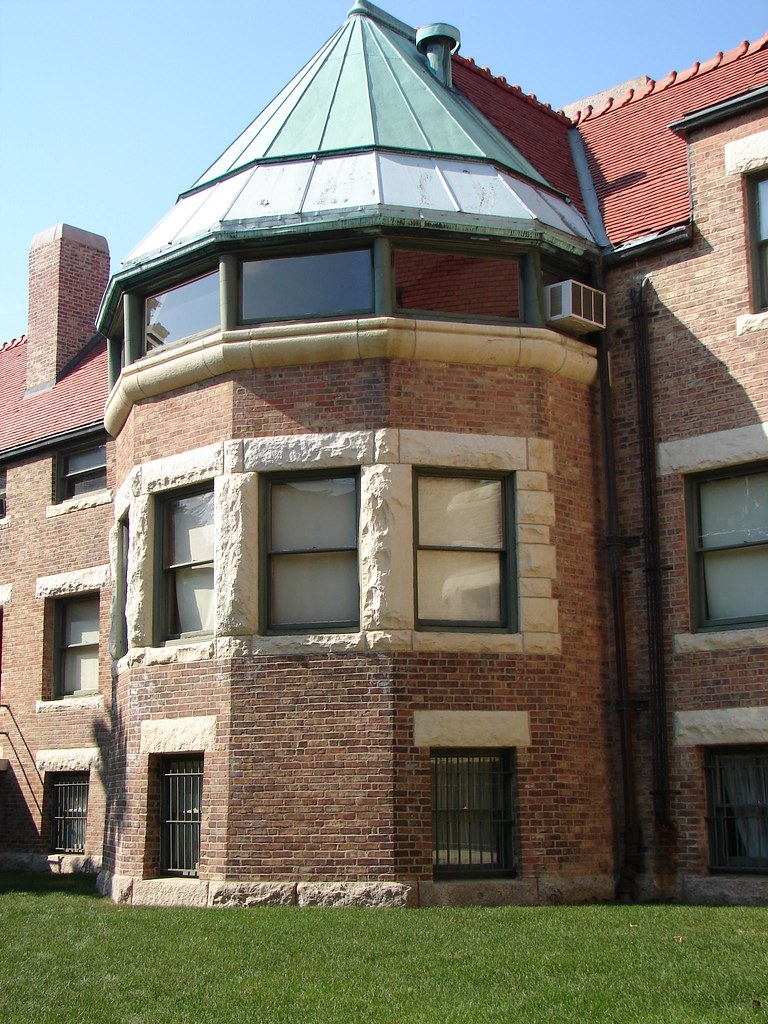I've been a combination of lazy and busy these past few weeks.
All this talk about Richardson has woken me up...
The Glessner House, H.H. Richardson, 1887
From the street:
In the garden:
An astonishing, hand-crafted masterpiece. The gravitas of Richardson trumps even the finest Beaux Arts monuments. I'm sad to say we didn't have time for the tour (Chicago is full of distractions).
I made a (wild?) assertion
here, and now I'll try to offer some evidence. As my middling snapshots show, the Glessner House presents a fortresslike face to the street, and turns inward to a private garden, sheltered from the noise of the street, and the prying eyes of neighbors. An
aerial photo of the house in context may help.
Glessner was built in 1887. To me, it's futurist, a premonition of the
inward-turning homes Wright designed late in his career, and even more, the free-form, self-contained worlds crafted by his student, John Lautner. Consider
this home, completed exactly 100 years after Glessner. The forms are free, but the sense of peaceful containment and protection should be obvious. Lautner's design includes several Styrian arches (not visible in the aerial). The board-formed concrete holds the same gravitas as Richardson's rugged stone. Coincidence, or genius?
Next post: The Robie House
